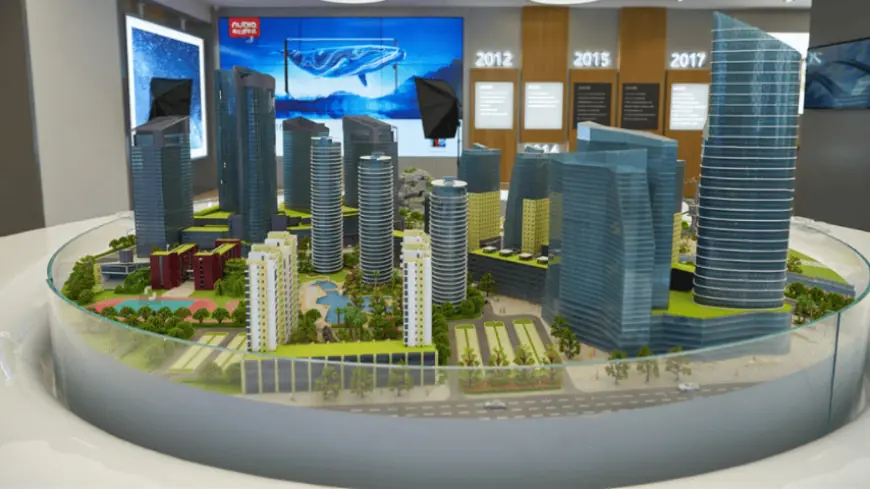Integrating Digital Technologies in Dubai's Architectural Models
Dubai’s mega developments are known for their innovation, scale, and complexity. To meet the high standards of modern construction, architectural scale models are evolving with the integration of digital technologies.

Dubai’s mega developments are known for their innovation, scale, and complexity. To meet the high standards of modern construction, architectural scale models are evolving with the integration of digital technologies.
These advanced techniques enhance accuracy, improve visualization, and streamline project planning. From 3D printing to augmented reality, digital tools are transforming how physical Architectural scale models Dubai are created and used in Dubai’s construction industry.
3D Printing for Precision and Speed
One of the most significant digital advancements in model making is 3D printing.
- Enhanced accuracy: 3D printers can create intricate details with precision that would be difficult to achieve by hand. This ensures that every element of the model is exact.
- Faster production: Traditional model-making methods can be time-consuming, but 3D printing accelerates the process by producing components quickly.
- Customization capabilities: With 3D printing, designers can easily modify parts of the model, making it simple to update designs without starting from scratch.
Laser Cutting for Detailed Components
Laser cutting is another digital technology used in creating architectural scale models.
- High-level detail: Laser cutting allows for the creation of intricate features like window frames, railings, and decorative elements with precision.
- Consistency and accuracy: It ensures that every piece is identical, maintaining uniformity throughout the model.
- Time efficiency: Like 3D printing, laser cutting speeds up production, reducing the time needed to produce detailed parts.
Integration of Augmented Reality (AR)
Augmented reality enhances physical models by overlaying digital information.
- Interactive visualization: AR allows viewers to see different aspects of the project by using a tablet or smartphone. For example, they can view interior layouts or see how the project looks at night.
- Dynamic updates: With AR, changes to the design can be displayed instantly, providing real-time updates without altering the physical model.
- Enhanced presentations: AR makes presentations more engaging by adding interactive elements, helping stakeholders better understand the project.
Incorporating Lighting and Sound Technologies
Digital lighting and sound systems are often integrated into scale models to make them more dynamic and realistic.
- Simulating real-world conditions: LED lighting can replicate different times of day, showing how the building will look in various lighting conditions.
- Highlighting key features: Specific parts of the model can be illuminated to draw attention to important areas like entrances, public spaces, or green areas.
- Adding sound effects: Sound systems can simulate urban noises, traffic, or even the ambiance of water features, creating a more immersive experience.
Use of Digital Twin Technology
Digital twin technology involves creating a digital replica of the physical model.
- Real-time monitoring: Digital twins can be linked to real-time data, showing how the actual construction progresses compared to the model.
- Predictive analysis: The digital twin can simulate different scenarios, helping planners anticipate potential issues before they arise.
- Streamlining collaboration: Teams can access the digital twin remotely, making it easier to collaborate and share updates across different locations.
CNC Milling for Large-Scale Models
Computer Numerical Control (CNC) milling is used to create large sections of architectural models.
- Precision carving: CNC machines carve out complex shapes from materials like wood, foam, or plastic with high precision.
- Efficient production: CNC milling is faster than traditional carving methods, allowing for quicker production of large-scale models.
- Consistency in large projects: It ensures that large sections are uniform and accurate, which is critical for mega developments.
Benefits of Digital Integration in Architectural Models
The integration of digital technologies into physical scale models offers several key benefits.
- Improved accuracy: Digital tools ensure that every aspect of the model is precise, reducing errors and discrepancies.
- Enhanced collaboration: Teams can work together more effectively by using digital platforms to share updates and modifications.
- Cost efficiency: While the initial investment in digital tools may be high, the long-term savings in time and resources make them cost-effective.
- Sustainability: Digital processes reduce waste by optimizing material use and enabling rapid adjustments without discarding physical components.
Conclusion
Digital technologies have revolutionized the creation of architectural scale models for Dubai’s mega developments. Tools like 3D printing, laser cutting, augmented reality, and digital twin technology enhance the accuracy, efficiency, and visual appeal of these models.
By integrating these advanced techniques, developers in Dubai can better plan, present, and execute large-scale projects. As digital innovation continues to evolve, the role of architectural models in construction planning will only become more vital, ensuring that Dubai remains a global leader in architectural excellence.

 3dprintingdubai
3dprintingdubai 










